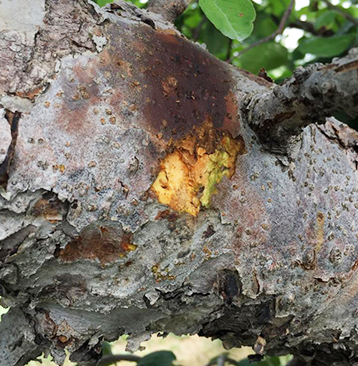

If you expose bark from an infected woody area, you will see that the diseased tissue closest to the main canker is brown. These long, narrow infections can extend 2 to 3 feet beyond the edge of the main infection or canker. Ideal conditions for infection, disease development, and spread of the pathogen are rainy or humid weather with daytime temperatures from 75° to 85☏, especially when night temperatures stay above 55☏.įire blight bacteria generally don’t move uniformly through the bark but invade healthy wood by moving in narrow paths up to 1 1⁄2 inches wide in the outer bark ahead of the main infection. Injuries on tender young leaves and shoots, caused by wind, hail, or insect punctures, are easily invaded by the fire blight bacteria. The amount of fruit loss depends upon the extent and severity of the disease. However, most cankers are small and inconspicuous thus infections might not be noticed until later in spring when flowers, shoots, and/or young fruit shrivel and blacken. The ooze turns dark after exposure to air, leaving streaks on branches or trunks.

The first sign is a watery, light tan bacterial ooze that exudes from cankers (small to large areas of dead bark that the pathogen killed during previous seasons) on branches, twigs, or trunks. In spring, branch and trunk canker symptoms can appear as soon as trees begin active growth. If not controlled, it can cause flower and fruit blight, twig and branch dieback, or even kill the plant.

Temperature, humidity, insect vectors, and wounding can all affect the severity of infection. Fire blight, caused by the bacterium Erwinia amylovora, it is a serious disease that affects new leaves, fruit, flowers, and stems of over 75 species of trees and shrubs in the rose family including: apple, crabapple, hawthorn, pear, pyracantha, cotoneaster, spirea, flowering quince, and mountain-ash.


 0 kommentar(er)
0 kommentar(er)
